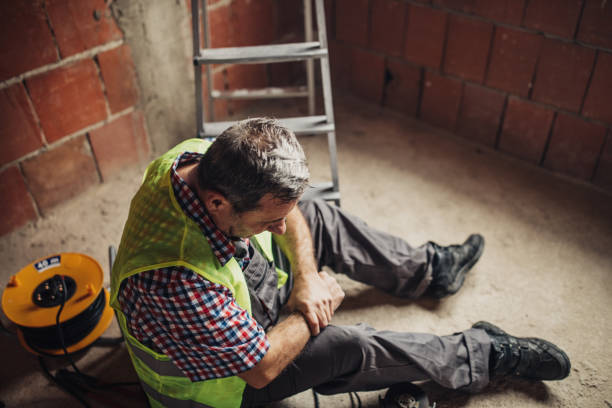Have you recently experienced a slip and fall injury? It can be a painful and frustrating experience, but the good news is that there are steps you can take to treat your injury and promote healing.
When it comes to treating a slip and fall injury, it is crucial first to assess the severity of your condition. This will help determine whether self-treatment at home is sufficient or if medical attention is necessary. Minor injuries such as bruises, scrapes, or small cuts can typically be treated at home with proper care and attention. However, more serious injuries like sprains, fractures, or head trauma may require immediate medical attention.
Now that you better understand the importance of assessing your injury’s severity, let’s dive into how you can effectively treat minor slip and fall injuries in the comfort of your own home.
By following these simple yet effective methods such as cleaning wounds thoroughly with mild soap and water before applying an antiseptic ointment along with keeping weight off an injured limb by using crutches or elevating it when possible, you’ll be well on your way to promoting healing and preventing further complications. Remember, taking prompt action after a slip and fall incident can make all the difference in ensuring a speedy recovery.
Assessing the Severity of the Injury
Now, let’s determine how bad the injury is by assessing its severity. Identifying potential long-term complications is crucial when it comes to treating slip and fall injuries. While some injuries may seem minor at first, they can have lasting effects if not properly addressed.
It is important to carefully examine the injured area for any signs of serious damage, such as severe pain, swelling, or deformity. If you notice any of these symptoms or suspect a fracture or dislocation, seeking immediate medical attention is essential.
In addition to seeking medical attention for severe slip and fall injuries, it is also important to consider the potential long-term complications that may arise from seemingly minor injuries. Even if you do not experience immediate pain or discomfort after a slip and fall incident, certain injuries can develop over time.
For example, a twisted ankle might lead to chronic instability or arthritis if left untreated. By getting prompt medical care and following appropriate treatment plans, you can minimize the risk of long-term complications and ensure a quicker recovery from your slip and fall injury. Remember, addressing the severity of your injury early on will greatly contribute to your overall well-being in the future.
Treating Minor Slip and Fall Injuries at Home
To effectively care for minor slip and fall injuries at home, it is important to promptly address any pain or discomfort experienced. One common injury from a slip and fall is a sprained ankle. If you suspect you have sprained your ankle, it is crucial to follow the R.I.C.E. method: rest, ice, compression, and elevation.
Resting the injured ankle will help prevent further damage and allow for healing. Applying ice to the affected area can reduce swelling and alleviate pain. Compression with an elastic bandage will provide support and stability to the ankle joint. Lastly, elevating the injured leg above heart level can help minimize swelling.
Another aspect of treating minor slip and fall injuries at home includes managing bruises that may occur as a result of impact during the fall. Home remedies for bruises can be effective in reducing their appearance and promoting healing.
One such remedy is applying a cold compress or ice pack to the bruised area for 10-15 minutes several times a day. This helps constrict blood vessels and reduce swelling. Additionally, arnica gel or cream can be applied topically to promote healing and reduce discoloration of bruises. It is important to note that if your symptoms worsen or persist despite home treatments, it is recommended to seek medical attention for further evaluation and treatment options.
By promptly addressing pain or discomfort associated with minor slip and fall injuries at home, such as a sprained ankle or bruising, you can effectively manage these injuries using simple remedies like rest, ice, compression, elevation, cold compresses, and arnica gel or cream application.
Remember to always listen to your body’s signals and seek medical attention if necessary for proper care of more severe injuries or if symptoms do not improve over time. It is important to prioritize your healing and not push yourself too hard, as this could potentially worsen the injury. Additionally, consult with a healthcare professional if you are unsure about the severity of your injury or if you require further treatment options.

Leave a Reply